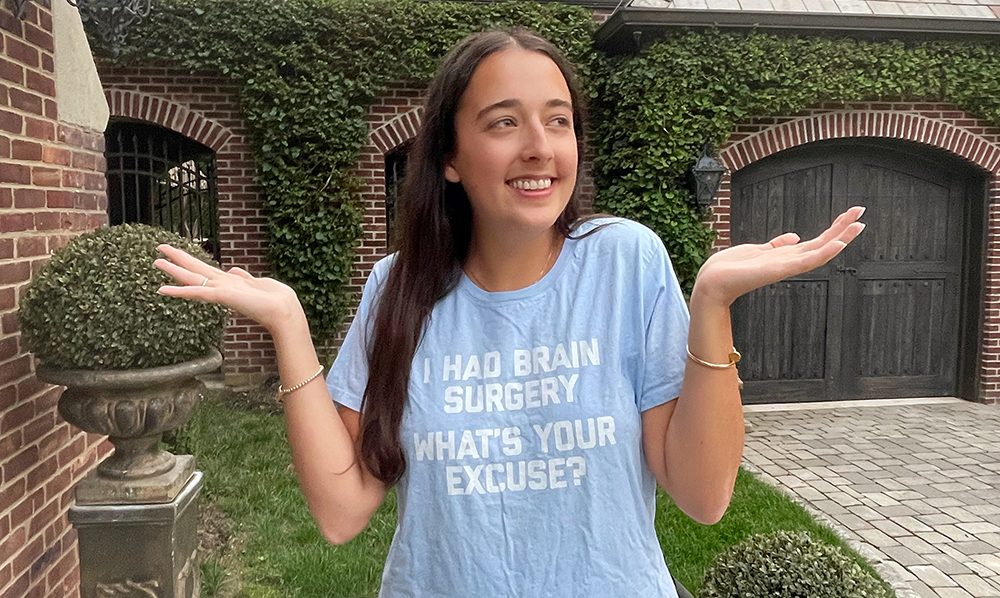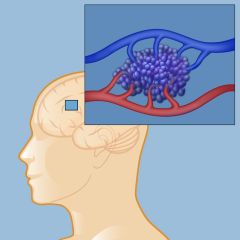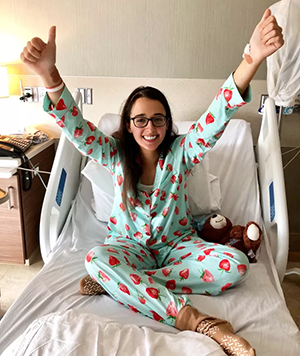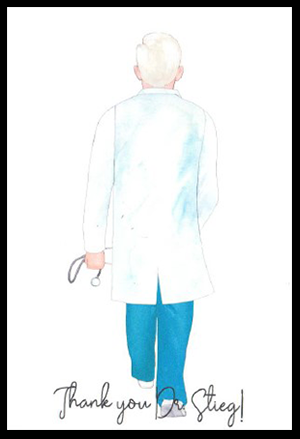
In the fall of 2020, Danielle Soviero felt as if she were right where she should be. She had graduated from college two years earlier and had begun her career as an early childhood teacher. “I look back at those years fondly,” she says. “I was just a normal twenty-something who loved going out, snuggling with my four (yes, four!) Pomeranians, spending time with my friends, and spending time on the beach in Florida with my family.”
Without warning one day, that idyllic life changed when she woke up feeling numb on the right side of her body. “I thought I had slept on it wrong, or that it was a pinched nerve,” she says. "I saw a chiropractor who found nothing wrong; they suggested I see a neurologist if the numbness continued. The very next day at work, I began dropping things, and by the time I got home my speech started to slur. So I saw a neurologist, who discovered the cavernous angioma.”
A cavernous angioma, also called a cavernous malformation or cav-mal, is a rare defect of blood vessels consisting of a tangle of capillaries (the small blood vessels that carry oxygenated blood deep into the brain). The vessel walls in this tangle are thinner and less elastic than they should be, and more prone to leaking. That leakage can create small “caverns” of blood within the brain. The leak can be intermittent, happening slowly over time, or it can occur in a single episode. Danielle’s symptoms, which started to go away on their own, had likely been due to a small bleed.
Eager to prevent further episodes, Danielle visited a neurointerventionalist, who told her that surgery was possible, but not advisable. It was too risky because of the location of the cav-mal, he said, and he assured her that the chances of the angioma bleeding again were slim. His advice: just live her life.
“I tried to live with that,” Danielle recalls. “But I was failing miserably. Not only were my symptoms continuing, but as a self-proclaimed hypochondriac, I couldn’t help but think about the grave possibilities of this condition.”

The tangle of capillaries in a cavernous malformation may leak and create small “caverns” of blood within the brain.
A few months later, Danielle experienced another painful episode. “I woke up in the middle of the night with the most painful, intense migraine I’d ever experienced — I thought I was going to die right there in my bed,” she says. “It was so intense that I couldn’t get up, or call for help. I eventually fell asleep, but later that morning I felt like my head was a balloon about to explode. I called my doctor and requested an MRI. He told me to take Tylenol and call back in a few days. But I knew my body well enough, and I knew in my heart that what I felt was a brain hemorrhage. I demanded an MRI. He told me the pressure could be allergies. When he finally agreed to a scan, we found that not only had angioma bled again, but it had grown. I was so upset. I knew right then and there that I needed to find a new doctor and get this fixed.”
Danielle and her parents made appointments with three different neurosurgeons to consult on her options. The third and final appointment on that warm spring day was with Dr. Philip E. Stieg, chair and neurosurgeon-in-chief of NewYork-Presbyterian/ Weill Cornell Medical Center and an international expert in cerebrovascular conditions, including cavernous malformations.
“I assured Danielle that, contrary to her neurointerventionalist’s opinion, we could safely remove the angioma,” says Dr. Stieg. “It’s a complicated condition, but this is my specialty. We see a good share of cases here, so we have a more complete understanding of what is and isn’t possible. It’s not enough for someone to just say it won’t bleed again. In cases like Danielle’s, doctors typically monitor the angioma. And it might be true that some patients never experience another bleed, but a hemorrhage can occur any time. With each hemorrhage, the symptoms can become worse and worse. And if left untreated, the patient can experience permanent neurological deficits or death.”
“I remember thinking he was brilliant beyond my comprehension,” recalls Danielle. “He explained everything to me so clearly, and he answered all of my family’s questions. I booked my surgery before I left the office. That in itself says everything you need to know about how confident I was in him. I didn’t go home and think about it or consider the other surgeons I’d met. I knew if I was going to do this, he was going to be the one I wanted with me.”

A little over a month later, Danielle arrived at NewYork-Presbyterian/Weill Cornell Medical Center mentally prepared for her surgery. “I had my ‘You Got This’ playlist, which is full of positive, uplifting songs that make me smile and dance,” she says. “In the leadup to surgery I remained positive, surrounding myself with friends and family. I didn’t let negative thoughts enter my head. Soon enough, I was being wheeled into the OR. I didn’t shed a tear that morning because I knew I was truly in the best hands.”
“In pre-op, we were surprised to find that Danielle’s angioma had grown yet again,” recalls Dr. Stieg. “Despite that, it didn’t affect any areas critical to her senses and it was pretty straightforward. We performed a craniotomy and completely removed the angioma. As with any procedure, there are risks. In this case the main risk was a temporary loss of speech. But that would resolve — the deficits that result from inaction can be permanent, so it was definitely the right choice to remove it.”
The first people Danielle saw upon waking up were her parents. “As they rushed to my bedside, I was overcome with so many emotions,” recalls Danielle. “But as I opened my mouth to say ‘I love you’, I realized I couldn’t speak. I cried out of fear and frustration. Dr. Stieg had warned me about it, but nothing could have prepared me for it. I was committed to staying positive — that if worse came to worst, I could just communicate through my iPad.”
Thankfully, Danielle didn’t need to use an iPad, as her speech returned just as Dr. Stieg had predicted. She continued her recovery at home. “I needed help with everything — walking, cutting my food, showering, especially because my right side was weakened. I had good days and bad days, but that was to be expected. I had to be patient with myself. I was on a plethora of medications and worked with a speech therapist, an occupational therapist, and a physical therapist the following month. My speech slowly came back, along with my balance.”

Danielle made a custom ‘thank you’ card for Dr. Stieg to express her gratitude. He says it looks just like him!
Three months later her brain scans were clear, and by her one-year checkup she was back to her old self.
“I’m so grateful to be on the other side of this,” she says. “Life before the surgery was great, but it’s such a foreign concept to me. It all feels so far away. I have a completely different outlook on life and don’t take a single thing for granted, like the ability to go for a walk on a beautiful day, to hold a fork on my own, or to say ‘I love you.’ I’ve changed for the better. I don’t sweat the small stuff anymore. I learned that most of what we worry about is so minute.”
To anyone reading this, Danielle has some words of advice: “I’d tell them that it’ll be okay. Do your homework and research the condition for the best possible doctors and surgeons. And if you’re lucky enough to go to Dr. Stieg, do it — it’ll be the best decision of your life. I will forever be indebted to his brilliance. He’s truly the best of the best. God forbid you should have to go into surgery, Dr. Stieg is without a doubt the person to go to. I trust him with my life.”